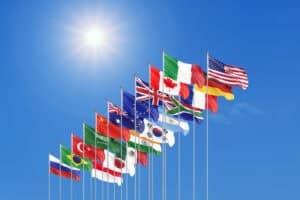Size counts in the conservation business and one expert believes it’s better to have a big one when it comes to land.

The desire for land, it would seem from a conversation that took place in the Limpopo bush late last year, is not just the prerogative of the disenfranchised: this tenet of radical economic transformation has been embraced by the nature conservation community as well.
South Africa boasts 21 national parks which cover four million hectares.
However, according to Stats SA, if you add all the provincial and private nature reserves, the total protected area increases to more than 11 million hectares or nearly nine percent of the South African mainland.
To put this into perspective, says Stats SA: “If protected land in South Africa were its own province, it would be larger than North West, KwaZulu-Natal, Mpumalanga or Gauteng.”
It’s not necessarily enough, say the conservationists. The problem, they add, is fences.
Private reserves

“Range extension” is a common topic of conversation around campfires on the country’s almost 500 private reserves and arguments are based on economics in addition to tree and bunny-hugging considerations.
Take the Waterberg which covers more than 650 000ha in northern Limpopo. Eco-tourism (which includes hunting) has become the greatest single contributor to the provincial economy.
There are a few really large private nature reserves – Lapalala measures about 48 000ha, while Welgevonden covers 37 500ha of the Waterberg Plateau – but the rest are considerably smaller.
The newly renamed Qwabi Private Game Reserve, where Dr André Uys is in charge of conservation, is 11 000ha of what was previously agricultural land. Most of the reserves in Limpopo are consolidated former farms where wildlife species have been reintroduced.
Species re-introduction

“Obviously, species reintroduction has focused on the Big Five because this is what visitors to Africa – most of whom spend a lot of money being here – come to see.
“Our aim is to get to the stage where reintroduction mimics as many natural processes as possible and that our animal populations are both healthy and sustainable,” says Uys.
ALSO READ: Bask in the magic of the Kgalagadi
This is the crux because the smaller the reserve, the less authentic the Big Five safari experience and the reserves effectively become lion, elephant or rhino zoos.
“We had a very healthy private wildlife industry which provided an immense amount of employment for skilled people but the value of wildlife was over-inflated for several years.
“People were able to make a pretty good living but the days of making a nice return on 500 to 1 000ha are long gone.”
‘Conservation is bigger when it’s better’
There’s a stark realisation among owners that operating properties this size is prohibitively expensive and downright risky if they’re carrying high-value “target” animals such as rhino. A rhinoceros is of more value dead than alive is a bitter truism on reserves. It demands a fortune to establish and operate an antipoaching unit, while all it costs the determined hunter is a single high-velocity rifle round.

“Conservation is better when it’s bigger,” says Uys.
“As is the case in other spheres of business, economies of scale apply.”
Just as reserve owners bought up bankrupt farms and consolidated them to provide ranges for wild animals, so these same owners are coming together to discuss dropping their common fences and collaborating on such issues as health, breeding and anti-poaching.
Each would maintain its own tourism identity and they would have limited access to one another’s property (known in the business as “traversing rights”) in terms of game-viewing with tourists. Fence-dropping is both good and bad news on the business front; especially so for the owners of smaller properties.
Animals migrate and the smaller reserves which could almost guarantee clients a full Big Five viewing on every morning and afternoon drive might find their veld denuded of game from time to time.
On the other hand, they might periodically find an impressive pride of lions popping in for dinner (with the regional antipoaching team in tow) and the YouTube shares would do wonders for sales!






